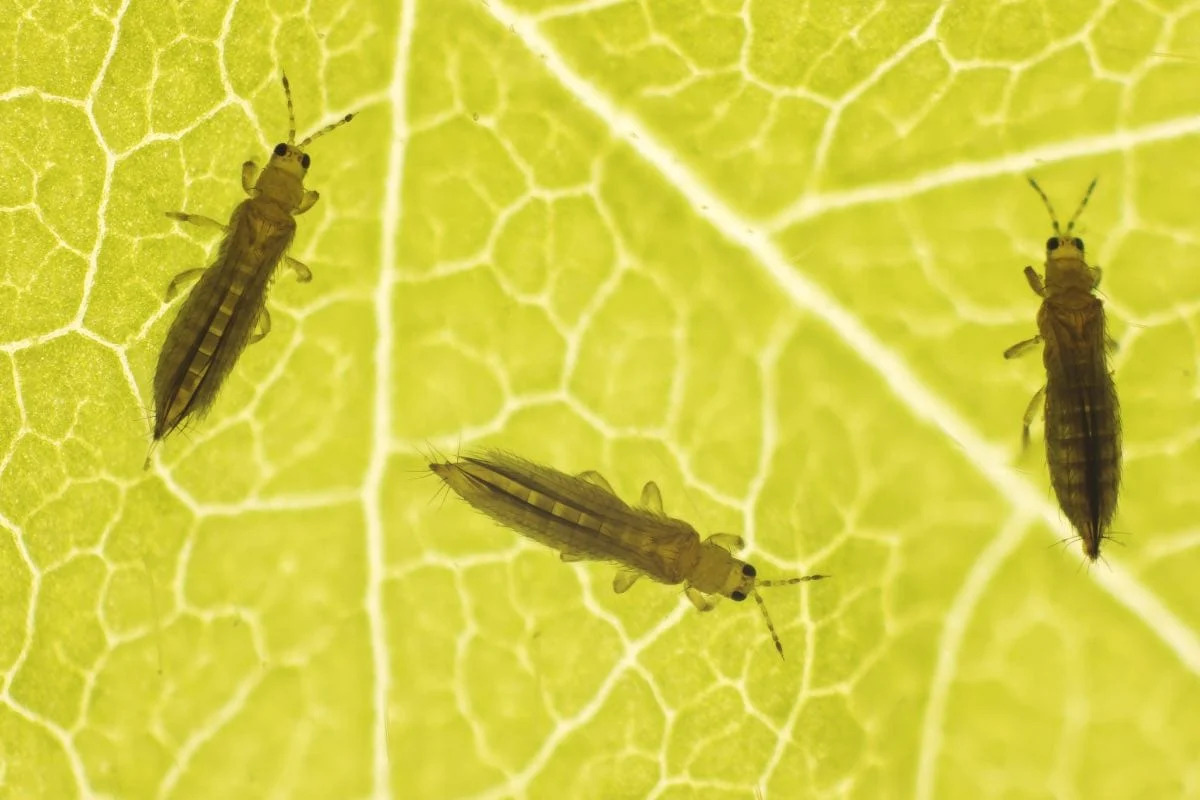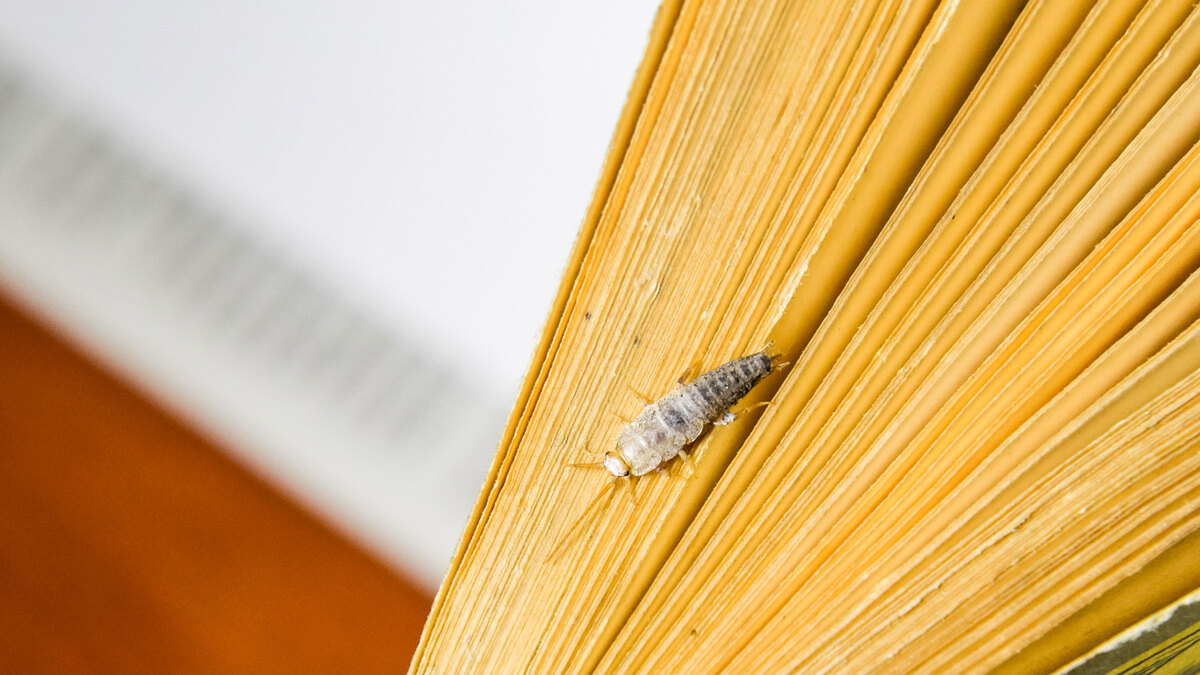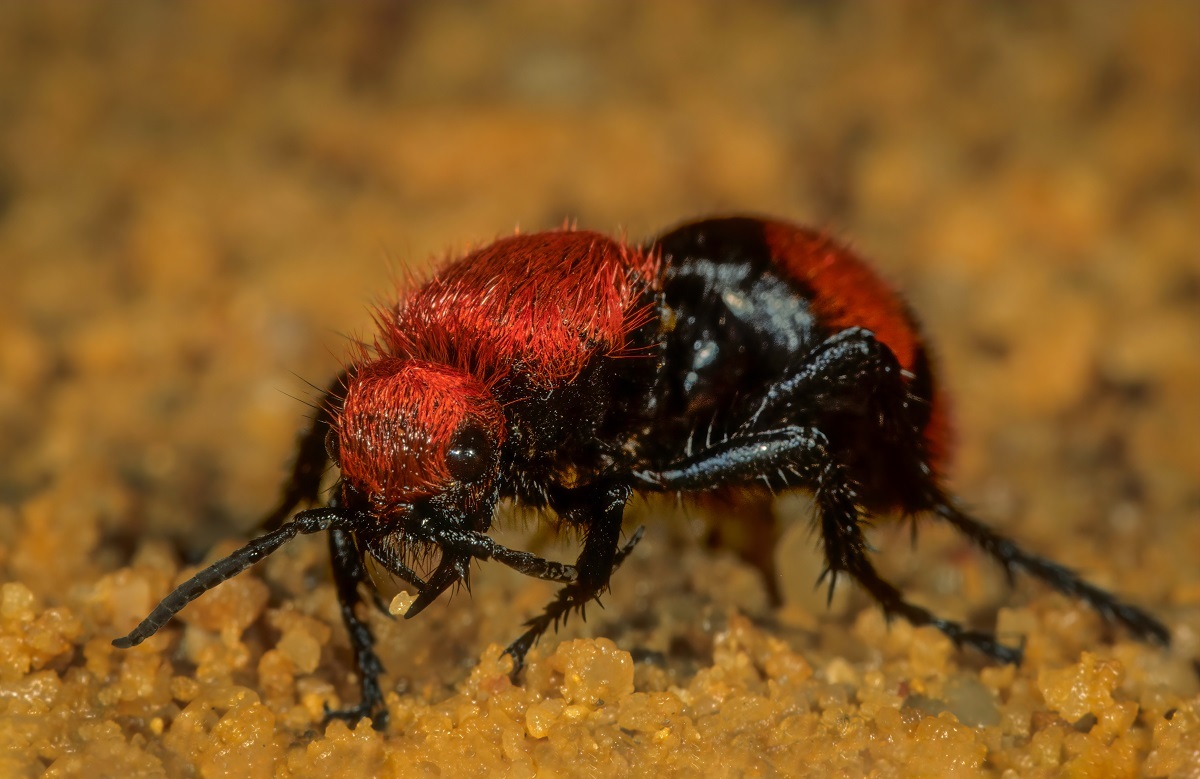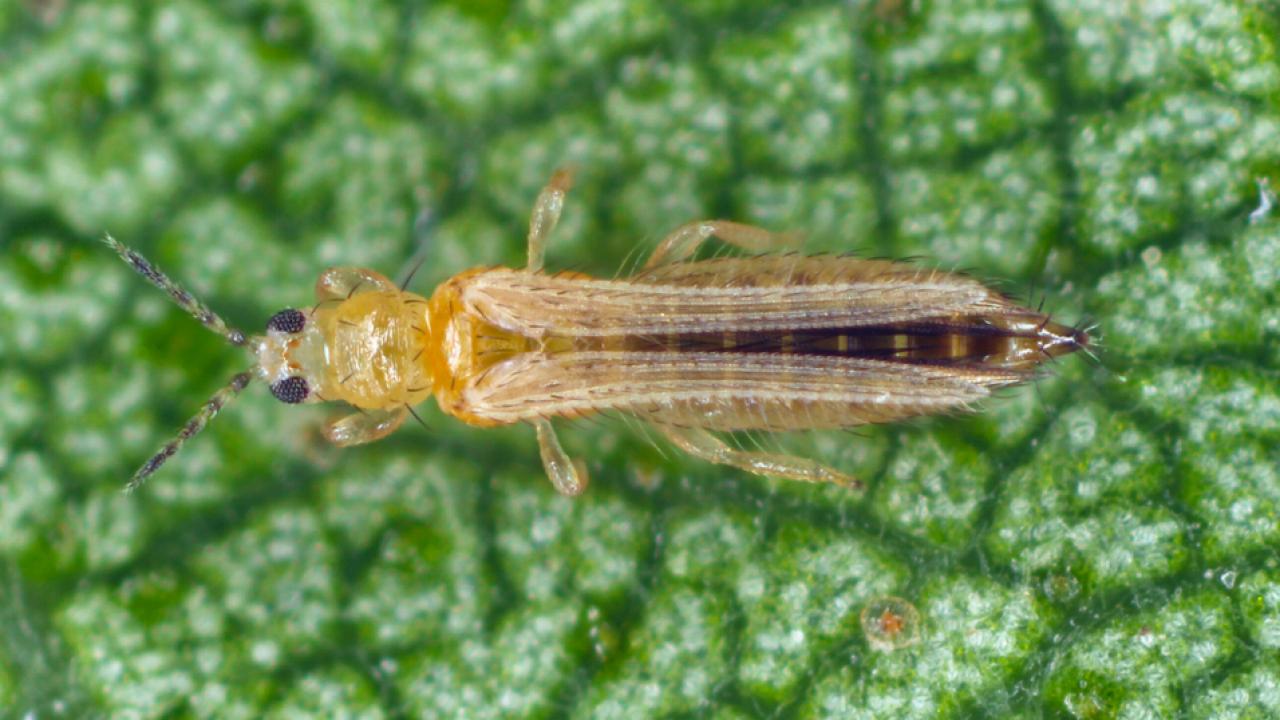Home>Gardening News and Trends>Latest News>What Insects Does Cypermethrin Kill


Latest News
What Insects Does Cypermethrin Kill
Modified: January 22, 2024
Discover the Latest News on Cypermethrin and its Effective Insect-Killing Properties. Learn which insects can be eliminated using Cypermethrin and stay updated on the latest developments
(Many of the links in this article redirect to a specific reviewed product. Your purchase of these products through affiliate links helps to generate commission for Chicagolandgardening.com, at no extra cost. Learn more)
Table of Contents
Introduction
Welcome to the world of Cypermethrin, where powerful pest control meets effective insect eradication. Whether you’re dealing with pesky ants, stubborn mosquitoes, or bothersome roaches, Cypermethrin is a go-to solution for many homeowners and professionals alike. In this article, we will explore the wonders of Cypermethrin, understanding what it is, how it works, and which insects it targets. So, get ready to bid those unwelcome visitors farewell as we dive into the world of Cypermethrin.
When it comes to pest control, having a reliable and efficient solution is crucial. Cypermethrin is a popular choice for its ability to effectively eliminate a wide range of insects. But what exactly is Cypermethrin? Put simply, Cypermethrin is a synthetic pyrethroid insecticide derived from the chrysanthemum flower, which has long been used for its natural insect-repelling properties.
Cypermethrin acts as a neurotoxin, disrupting the nervous system of insects upon contact or ingestion. Its mode of action targets the specific receptors in the insect’s nervous system, leading to paralysis and ultimately death. Not only is Cypermethrin effective, but it also has a relatively low toxicity to humans and animals, making it a preferred choice for pest control in residential and commercial settings.
Now that we have a basic understanding of how Cypermethrin works, let’s explore the various insects that are no match for this potent insecticide. Keep in mind that different formulations and concentrations of Cypermethrin may be effective against certain insect species, so always read and follow the product instructions for best results.
What is Cypermethrin?
Cypermethrin is a synthetic pyrethroid insecticide that belongs to a class of chemicals called pyrethroids. It is derived from a natural compound found in chrysanthemum flowers and has been widely used for pest control since the 1970s. With its powerful insecticidal properties, Cypermethrin has become a popular choice for both indoor and outdoor pest control applications.
One of the key advantages of Cypermethrin is its effectiveness against a wide range of insect pests. From common household pests like ants, cockroaches, and spiders to outdoor nuisances like mosquitoes, flies, and ticks, Cypermethrin can effectively control and eliminate these unwanted visitors. Its broad-spectrum activity makes it a versatile tool for pest management.
Cypermethrin works by targeting the nervous system of insects. It disrupts the normal functioning of sodium channels, which are vital for the proper transmission of nerve signals. This interference leads to paralysis and eventual death of the insect. The mode of action is quick, making it an efficient choice for immediate insect control.
Another advantage of Cypermethrin is its residual activity. Once applied, it can provide long-lasting protection against pests. This is especially beneficial in outdoor settings where repeat applications may not be feasible or practical. With proper application and adherence to label instructions, Cypermethrin can offer weeks or even months of protection.
Cypermethrin is available in various formulations, including liquid concentrates, dusts, and aerosols. These different formulations allow for flexibility in application methods, ensuring that Cypermethrin can be used in a variety of situations. Whether you need to treat indoor surfaces, outdoor areas, or even crops, there is a Cypermethrin formulation suitable for your needs.
It is important to note that while Cypermethrin is effective against many insect pests, it is also toxic to beneficial insects such as bees and butterflies. Care should be taken to minimize exposure to non-target organisms by applying Cypermethrin only where necessary and following recommended application rates.
In summary, Cypermethrin is a potent insecticide that offers effective control of a wide range of insect pests. Its broad-spectrum activity, quick mode of action, and residual effects make it a reliable choice for pest management. However, it is essential to use Cypermethrin responsibly and with consideration to the environment and non-target organisms.
How does Cypermethrin work?
Cypermethrin works by targeting the nervous systems of insects, disrupting their normal functions and ultimately leading to their demise. This potent insecticide belongs to the class of chemicals known as pyrethroids, which are synthetic versions of natural compounds found in chrysanthemum flowers.
When insects come into contact with Cypermethrin, whether through direct exposure or ingestion, the active ingredient begins to take effect. Cypermethrin acts as a neurotoxin, interfering with the proper functioning of sodium channels in the insect’s nerve cells. Sodium channels are responsible for transmitting nerve signals, and disrupting this process has profound effects on the insect’s nervous system.
By targeting sodium channels, Cypermethrin causes hyperexcitation of the nerve cells, leading to paralysis in the insect. This paralysis affects essential functions such as movement and feeding, rendering the insect unable to carry out basic activities necessary for survival. Eventually, the paralysis spreads throughout the insect’s body, resulting in its demise.
Cypermethrin’s mode of action is specifically designed to have a higher affinity for insect sodium channels compared to mammalian sodium channels. This selectivity allows Cypermethrin to effectively control insect pests while minimizing the risk of harm to humans, pets, and other non-target organisms. However, caution should still be exercised to minimize exposure to Cypermethrin and adhere to safety precautions and label instructions.
Another factor that contributes to the effectiveness of Cypermethrin is its residual activity. After application, Cypermethrin can remain active on treated surfaces for an extended period, providing ongoing protection against insect pests. This residual effect is particularly useful in situations where continuous reapplication may not be feasible, such as in outdoor areas or structural treatments.
It is important to note that while Cypermethrin is highly effective against many common insect pests, some insects may have developed resistance to its effects. In such cases, alternative insecticides or integrated pest management approaches may be necessary to achieve effective control.
To ensure the optimal effectiveness of Cypermethrin, it is essential to follow the recommended application rates and techniques. Different formulations of Cypermethrin are available, including liquids, dusts, and aerosols, each with specific instructions for use. By adhering to these guidelines and considering the specific needs of your pest control situation, you can maximize the benefits of Cypermethrin while minimizing any potential risks.
In summary, Cypermethrin disrupts the nervous systems of insects by targeting their sodium channels, leading to paralysis and eventual death. Its selectivity for insect sodium channels, residual activity, and various formulations make it an effective choice for controlling a wide range of insect pests. However, it is important to use Cypermethrin responsibly and in accordance with label instructions to achieve optimal results.
Target Insects
Cypermethrin is known for its broad-spectrum activity, making it effective against a wide range of insect pests. Whether you’re dealing with indoor pests or outdoor nuisances, Cypermethrin can be a powerful tool in your arsenal. Let’s explore some of the common insect pests that Cypermethrin can target.
1. Ants: Cypermethrin can effectively control various species of ants, including carpenter ants, fire ants, and odorous house ants. Whether they’re invading your kitchen or building nests in your yard, Cypermethrin can help eliminate these persistent pests.
2. Cockroaches: Known for their resilience and adaptability, cockroaches can be a challenge to eliminate. However, Cypermethrin can be highly effective in controlling these uninvited guests, including common species like German cockroaches and American cockroaches.
3. Mosquitoes: Mosquitoes are not only annoying, but they can also transmit serious diseases like malaria, dengue fever, and Zika virus. Cypermethrin, when applied properly, can provide relief by reducing mosquito populations and minimizing the risk of mosquito-borne diseases.
4. Flies: Flies buzzing around your home or business can be both a nuisance and a potential health hazard. Cypermethrin can help control various types of flies, including house flies, fruit flies, and stable flies.
5. Ticks: These tiny arachnids can carry dangerous diseases such as Lyme disease and Rocky Mountain spotted fever. Cypermethrin can be applied to outdoor areas to help reduce tick populations and minimize the risk of tick bites.
6. Spiders: While spiders can play a role in natural pest control by consuming other insects, certain species like black widows and brown recluses can pose a threat to humans. Cypermethrin can be used to target these venomous spiders and help keep them at bay.
7. Bed Bugs: Dealing with a bed bug infestation can be a nightmare. Cypermethrin, in combination with other bed bug control strategies, can help eradicate these blood-sucking pests and bring peace back to your home.
8. Fleas: If you have pets, fleas can become a persistent issue. Cypermethrin can be used to treat indoor and outdoor areas to control fleas and prevent further infestations.
These are just a few examples of the many insect pests that Cypermethrin can effectively target. It is important to note that different formulations and concentrations of Cypermethrin may be required for optimal control of specific pests. Always read and follow the product label instructions carefully to ensure both safety and effectiveness.
Remember, effective pest control goes beyond just using insecticides. Integrated pest management (IPM) approaches, such as maintaining cleanliness, eliminating food and water sources, and sealing entry points, should be incorporated alongside the use of Cypermethrin for long-term pest prevention.
In summary, Cypermethrin can be a valuable tool in combating a wide range of insect pests. From ants and cockroaches to mosquitoes and ticks, Cypermethrin can help you reclaim your space from these unwelcome intruders. Implementing a comprehensive pest management plan that integrates Cypermethrin along with other IPM strategies can provide effective and lasting control of target insects.
Common Insects Killed by Cypermethrin
Cypermethrin is a powerful insecticide that can effectively kill a wide range of common insect pests. From household nuisances to outdoor invaders, Cypermethrin can provide effective control and help you maintain a pest-free environment. Here are some of the most common insects that can be eliminated by Cypermethrin:
1. Ants: Whether you’re dealing with tiny sugar ants in the kitchen or larger carpenter ants causing structural damage, Cypermethrin can be highly effective in eradicating ant colonies and preventing re-infestations.
2. Cockroaches: These resilient pests can enter homes and businesses, posing a health risk due to their ability to spread diseases. Cypermethrin can be a powerful tool in eliminating different species of cockroaches and preventing their reappearance.
3. Mosquitoes: Notorious for their itchy bites and potential to transmit diseases, mosquitoes are a common outdoor nuisance. Applying Cypermethrin to outdoor areas can significantly reduce mosquito populations and provide relief from their persistent presence.
4. Flies: House flies, fruit flies, and other flying insects can quickly become a nuisance, particularly in warm weather. Cypermethrin can help control these pests, reducing their numbers and minimizing the annoyance they cause.
5. Ticks: Found in outdoor environments like forests and tall grass, ticks can carry diseases and pose a risk to humans and pets. Treating outdoor areas with Cypermethrin can help decrease tick populations and lower the chances of encountering these parasitic pests.
6. Spiders: While some spiders are beneficial in controlling other insects, certain species can be venomous or provoke fear in individuals. Cypermethrin can effectively eliminate venomous spiders like black widows and brown recluses, providing peace of mind.
7. Bed bugs: These elusive pests can infest mattresses, furniture, and other areas where people sleep or spend extended periods. Cypermethrin, in combination with other bed bug control methods, can help eradicate these blood-sucking parasites.
8. Fleas: Pets can bring fleas into homes, leading to itchy bites and discomfort for both humans and animals. Cypermethrin can be used to treat infested areas and control flea populations, helping to alleviate the problem.
It’s important to note that while Cypermethrin is effective against these common insect pests, proper application techniques and following label instructions are crucial for optimal results. Additionally, different formulations and concentrations of Cypermethrin may be required for specific insects, so it is essential to identify the target pest accurately before treatment.
Cypermethrin can be used in various settings, including residential homes, commercial buildings, and outdoor environments. However, caution should be exercised to minimize exposure to non-target organisms, such as beneficial insects, pets, and humans. Always read and follow the safety precautions and guidelines provided by the product label to ensure safe and effective use.
In summary, Cypermethrin has proven to be highly effective in eliminating common insect pests such as ants, cockroaches, mosquitoes, flies, ticks, spiders, bed bugs, and fleas. By using Cypermethrin in combination with proper sanitation practices and integrated pest management approaches, you can regain control over your space and achieve long-lasting pest control results.
Safety and Precautions
While Cypermethrin is an effective insecticide for controlling pests, it is essential to prioritize safety and follow proper precautions when using this chemical. By taking necessary measures, you can ensure the well-being of yourself, your family, and the environment. Here are some important safety guidelines to consider when using Cypermethrin:
1. Read and Follow Instructions: Before using any Cypermethrin product, carefully read and understand the product label instructions. These instructions provide valuable information regarding the proper dosage, application methods, and safety precautions specific to that particular product.
2. Wear Protective Gear: When applying Cypermethrin, it is crucial to wear appropriate protective gear, including long-sleeved clothing, long pants, gloves, and goggles. This protective clothing helps minimize direct skin contact and prevents accidental ingestion or inhalation of the chemical.
3. Keep Out of Reach of Children and Pets: Store Cypermethrin products in a secure location that is inaccessible to children and pets. Even when diluted or in its concentrated form, Cypermethrin can be harmful if ingested or accidentally applied to skin or eyes.
4. Avoid Contamination of Food and Water: Prevent contamination of food and water sources by keeping Cypermethrin away from areas where food is prepared or stored. Additionally, avoid applying the chemical near wells, ponds, or other water sources to prevent contamination of drinking water or aquatic ecosystems.
5. Proper Mixing and Application: Follow the recommended mixing ratios and application techniques specified on the product label. Do not exceed the recommended dosage, as this can lead to excessive chemical exposure and potential harm to the environment.
6. Ventilate Treated Areas: Ensure proper ventilation when applying Cypermethrin indoors. Open windows and doors to create airflow and avoid inhalation of chemical fumes. If possible, vacate the treated area until the product has dried and the odor has dissipated.
7. Disposal of Unused Product: Properly dispose of any unused Cypermethrin products or empty containers. Follow local guidelines for pesticide disposal to prevent environmental contamination and reduce potential harm to wildlife and ecosystems.
8. Consider Environmental Impact: Cypermethrin can be toxic to beneficial insects such as bees and butterflies. To minimize unintended harm to these beneficial organisms, avoid applying Cypermethrin directly to blooming flowers or areas frequented by pollinators.
9. Consult Professionals: If you have any concerns or questions about using Cypermethrin, it is best to consult with a pest control professional or seek advice from your local extension office. These experts can provide insights, recommendations, and guidance specific to your pest control needs.
Remember, using Cypermethrin according to the instructions and taking necessary safety precautions will help ensure effective pest control while minimizing risks to humans, pets, and the environment.
In summary, safety should be the top priority when using Cypermethrin. Following the product label instructions, wearing protective gear, preventing contamination of food and water, and considering the environmental impact are all crucial steps in using Cypermethrin responsibly. By adopting these safety measures, you can effectively manage pests while safeguarding the well-being of yourself, your loved ones, and the environment.
Conclusion
Cypermethrin is a powerful insecticide that has proven to be highly effective in controlling a wide range of insect pests. Whether you’re dealing with ants, cockroaches, mosquitoes, flies, ticks, spiders, bed bugs, or fleas, Cypermethrin can be a valuable tool in your pest management strategy. Its broad-spectrum activity, quick mode of action, and residual effects make it a versatile choice for both indoor and outdoor pest control.
However, it is important to approach the use of Cypermethrin with caution and prioritize safety. Always read and follow the instructions provided on the product label, wear protective gear, and take necessary precautions to prevent exposure to non-target organisms and contamination of food and water sources. By using Cypermethrin responsibly, you can achieve effective pest control while minimizing risks to humans, pets, and the environment.
Furthermore, it’s important to note that Cypermethrin is just one tool in the toolbox of integrated pest management (IPM). Incorporating other preventive measures such as maintaining cleanliness, minimizing access points, and removing food and water sources can help enhance the efficacy of Cypermethrin and promote long-term pest control.
In conclusion, Cypermethrin offers a reliable and efficient solution for eliminating unwanted insects. With its potent insecticidal properties and ability to target a wide range of pests, Cypermethrin can help you regain control over your space and enjoy a pest-free environment. By using Cypermethrin responsibly and in conjunction with other pest control strategies, you can effectively manage and prevent insect infestations, ultimately ensuring a healthier and more comfortable living or working environment.





